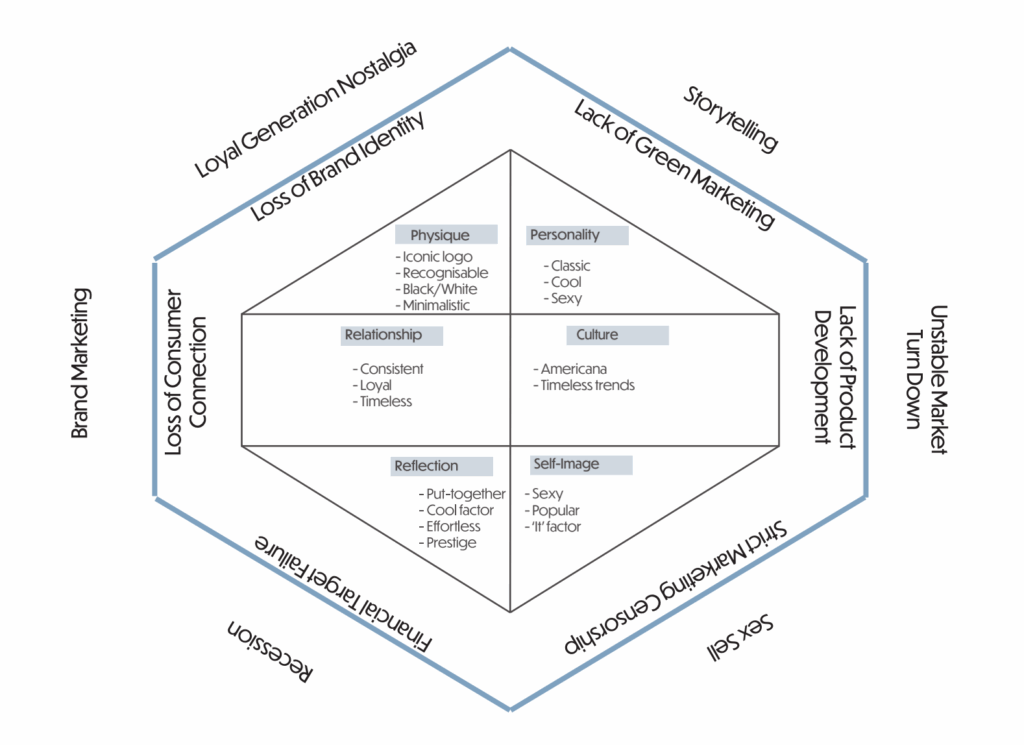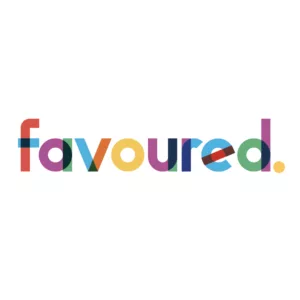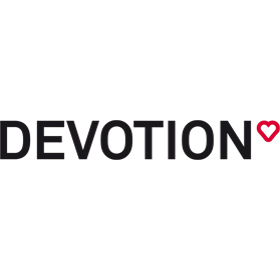
How Calvin Klein Marketing Strategy Sets the Standard in Fashion Marketing
Black-and-white photography, minimalism, and young faces captured in a sensual, almost cinematic way… Which fashion brand comes to mind?
Of course, it’s Calvin Klein.
What began as a clean visual language in the 1980s has evolved into one of the most recognizable aesthetics in the world. While other brands adjust to the latest trend cycle, Calvin Klein continues to shape it
In this blog, we’ll explore why even the most experienced fashion marketing agencies still look to Calvin Klein as the benchmark for creativity, consistency, and cultural relevance.
Unpacking Calvin Klein’s Iconic Marketing Playbook:
What is Calvin Klein’s Marketing Strategy?
Why are we not bored by seeing Calvin Klein’s signature across jeans, underwear, and fragrances after all these years?
The answer is clear: it’s marketing.
What keeps Calvin Klein relevant after more than 50 years in a constantly shifting fashion marketing world is its ability to create provocative strategies that spark conversation every time.
Actually, Calvin Klein’s marketing strategy is rooted in emotional appeal rather than just product placement. As a West Virginia University study on Calvin Klein advertisements noted:
Calvin Klein knows that sex sells, and that is what he focuses on in his advertisements. Some advertisements had tiny clothes displayed on the models, which in turn, may suggest that his main focal point is the models themselves rather than his clothing. They also depict negative images of what the ideal body image should be like – the photos usually involve females and males who are Caucasian, thin, dark-haired, having a gaze that is either cool or seductive, and the model’s pose is usually directed at the camera.
And, yes, this unapologetically sensual approach to advertising has defined Calvin Klein since the 1980s, and it gives the brand both controversy and cultural staying power.
Key Pillars of Calvin Klein’s Marketing Strategy
According to PVH Corp., Calvin Klein’s parent company, the fashion brand’s marketing strategy revolves around six major pillars:
- Consumer engagement: Reigniting the brand through collaborations, capsule collections, and experiential activations like events.
- Product innovation: Delivering compelling products that balance an accessible premium image with Calvin Klein’s signature seductive aesthetic, while focusing on sustainability.
- Category & product expansion: Strengthening presence in sportswear, jeanswear, accessories, and women’s intimates.
- Regional growth: Targeting expansion in Europe and the Asia-Pacific region, where luxury and aspirational fashion categories are on the rise.
- Digital marketing efforts: Growing ecommerce, omni-channel capabilities, and social media efforts to meet shifting consumer behaviors.
- Operational efficiency: Streamlining business operations to improve profit margins.
While PVH Corp saying that, according to the Strategic Visualization Report of the University of Manchester, there are some troubles with the brand, especially in hitting marketing targets:

However, we still think that Calvin Klein excels in fashion & retail marketing. The brand’s iconic marketing campaigns support our idea, right? Let’s remember these campaigns.
Iconic Calvin Klein Marketing Campaigns
From the moment Brooke Shields declared, “Nothing comes between me and my Calvins,” the brand sold attitude.
As marketers & brand owners, we know how rare it is for a campaign to define both a product and a generation. Calvin Klein did exactly that, again and again.
Each campaign invited audiences to feel something unapologetically confident.
In this section, we’ll look at how Calvin Klein turned minimalist visuals and emotional storytelling into timeless marketing lessons.
CK One: 20th Anniversary Campaign
Let’s start with a campaign, which used Tumblr as its main social media platform. Interesting, right?
When Calvin Klein marked the 20th anniversary of CK One in 2014, the brand actually reintroduced a cultural idea.

Created & directed by Mario Sorrenti, the campaign, using a raw, “camera-phone” or “selfie” aesthetic, featured a diverse collective of young figures in candid, collage-like scenes that mirrored the way audiences.
What truly set the campaign apart was its digital-first strategy (in 2014!). It expanded beyond print and film into social storytelling through both Tumblr and Snapchat. In that way, the Calvin Klein campaign invited audiences to engage with the #ckmeforme hashtag and share their own self-portraits.
CK2 Campaign
When it comes to Calvin Klein advertising, we must mention diversity and acceptance.
And the 2016-dated CK2 campaign, which is a great example of the Calvin Klein perfume marketing strategy, covered all of these.
Why does it matter?
According to GLAAD’s Accelerating Acceptance report, 12% of young people identify as transgender or gender non-conforming. The campaign, shot by Ryan McGinley, featured real, unconventional young couples and friends in urban, intimate moments and was promoted as gender-fluid.
The dual-faced scent for the two of us.
From a marketing perspective, the campaign spoke directly to a generation that rejects labels, while the product design symbolized equality and duality.
#MyCalvins Campaign featuring Billie Eilish
Here is another narrative around identity, body, and authenticity.
Launched back in 2019, the Calvin Klein campaign featured well-known singer & songwriter Billie Eilish (then 17) as a contrast to the brand’s past sensual campaigns.
Eilish’s appearance was deliberately modest: oversized clothing, minimal makeup, and her signature androgynous style.
In her accompanying interview, she explained:
I never want the world to know everything about me. That’s why I wear baggy clothes—so no one can have an opinion about my body.
The best part, this statement reframed the fashion brand’s message from one of exposure to one of empowerment, turning privacy itself into a form of self-expression.
JUNGKOOK x CALVIN KLEIN
One of the brand’s most viral moments in recent years, and it’s easy to see why.
When Calvin Klein announced BTS’s Jungkook as its global ambassador in March 2023, the partnership immediately generated global buzz. Long before the campaign was released.
The launch video featuring Jungkook in Calvin Klein denim and underwear got over 34 million views on TikTok within days. It proved how powerfully K-pop fandom and digital culture intersect.
This wasn’t just about celebrity influence; it was a case study in how global brands can tap into fan-driven ecosystems that amplify content organically. Jungkook’s fans didn’t just watch—they shared, remixed, and recreated, turning the campaign into a participatory media event.
Calvin Klein x Jeremy Allen White
That one may be the most memorable, alongside the one featuring Bad Bunny.
We love the Calvin Klein x Jeremy Allen White campaign because it captures everything the brand has always done best: intimacy, authenticity, and cultural timing.
The Calvin Klein advertisement was released during FX’s popular TV show “The Bear” buzz in 2024. In the campaign, The Bear star appeared in Calvin Klein’s signature minimal underwear shots in New York.
Within hours of release, the shots flooded social media feeds, generating millions of views and turning White into an unexpected internet star.
The vibe is infinite. featuring Bad Bunny
We’re continuing with a TikTok phenomenon: the Calvin Klein ad with “the great” Bad Bunny.
Actually the Calvin Klein x Bad Bunny campaign was another cultural masterstroke. Released in April 2023, the ad blended Calvin Klein’s timeless black-and-white minimalism with the artist’s bold, unapologetic energy.
It was classic Calvin Klein, but with a distinctly Bad Bunny twist: playful confidence, subtle rebellion, and a refusal to fit any traditional mold of masculinity.
Justin Bieber + Lara Stone – Calvin Klein Jeans Spring
Here is another campaign that marked a pivotal moment in the Calvin Klein global marketing strategy; it, no doubt, perfectly illustrated how the brand merges celebrity power with provocative storytelling.
Featuring both Justin Bieber (who was at his career peak) and Lara Stone, the campaign was released back in 2015. It recalled Calvin Klein’s 1990s aesthetic roots while updating them for the social media era.
As a result, the visuals sparked immediate global conversation, trending across Twitter and Instagram within hours of release, and boosting Calvin Klein’s digital engagement by millions of interactions in the first week alone.
Calvin Klein Digital Marketing Strategy
Calvin Klein is actually a fashion brand treating “digital” as an add-on; but as core to marketing.
How do we know that? In a 2019-dated Q&A named “Welcome to the end of digital marketing,” Marie Gulin-Merle (CMO of Calvin Klein / Chief Digital Officer of PVH), described their shift from “digital marketing” to “marketing,” meaning that every campaign is designed first for digital experiences (stories, feeds, mobile screens) rather than being retrofitted.
The well-known fashion brand also leans into platform trends and experiments rather than rigid channel silos, as its many rivals do. This agility lets them occupy cultural moments rather than just advertise in them.
What’s more?
You’re invited to find out Calvin Klein’s digital marketing strategy; how it works today, where it came from, and why it still offers lessons for brands, especially ones trying to stay culturally relevant.
Minimalist Visuals + Provocative Tension
As we mentioned above, the entire marketing strategy of Calvin Klein is rooted in a minimalist aesthetic (black-and-white palettes, clean lines, negative space in many cases) to let emotional or provocative tension carry the message.
Digital platforms, including social media channels, allow subtle shifts: overlaying user-generated imagery, mixing Polaroid or “camera-phone” textures, or creating collage-style feeds.
The best part? Calvin Klein knows that provocative imagery fuels conversation and virality.
Collaborations and Ambassadors
If we look at how Calvin Klein builds cultural relevance, its ambassador strategy is one of the smartest in global marketing today.
For the brand, popular figures are not decoration for ads; Calvin Klein turns personalities into real storytellers and people who favor the brand’s products. Take a look at its collaboration with Rosalia:

The research titled “The Role of Brand Ambassador, Brand Image and Brand Awareness in Shaping Purchase Decision of Calvin Klein” supports that idea:
An effective brand ambassador can effectively explain and represent Calvin Klein’s fashion products, highlighting the advantages offered by these products. As a result, consumers feel more confident in the quality and credibility of the Calvin Klein brand, ultimately strengthening brand trust.
Think back to Justin Bieber’s 2015 campaign with Lara Stone. Bieber’s image, raw, self-assured, and unapologetically confident, connected instantly with a generation raised on social media.
Targeting Younger Market & Popular References
Calvin Klein’s success with younger audiences comes from how naturally it speaks their language without trying too hard to sound youthful.
The brand has learned to blend its timeless minimalism with the symbols and personalities that define each generation. These ambassadors act as bridges between the brand’s sensual legacy and Gen Z’s appetite for authenticity.
Calvin Klein opening the door to even young artists can start this trend off on the right path. It has been legendary to hear young rappers call out brands and individuals who inspire and support them. This has been going on for decades; for example a rap song titled Elon Musk by DDG featuring Gunna, the screaming of Balenciaga in American Horror Story films, or even something that became an online sensation is Daniel from ‘Damn Daniel, back with the white Vans!’
Promoting Fashion Shows
Calvin Klein’s approach to promoting fashion shows reflects some of the most effective social media strategies for fashion.
Promoting shows and runways may appear to be a simple concept for a fashion brand. However, Calvin Klein’s each show becomes part of a larger digital narrative designed for TikTok, Instagram, and YouTube.
According to research titled Calvin Klein Proposal/Analysis-Brand Overview:
A fashion show has been the most traditional and hip, but effective way to get individuals to engage. The target markets get an opportunity to not just engage with the brand, its product, but also network with individuals who share mutual interests. Events such as fashion shows can be handled within press releases and also promoted through digital platforms as well.
Calvin Klein’s behind-the-scenes clips, model takeovers, and cinematic teaser videos build anticipation long before the first look hits the runway.
This digital-first mindset allows Calvin Klein to control the conversation while letting fans feel like insiders. By combining high-quality production with candid, shareable moments, the brand turns its shows into both creative showcases and viral social events.
Key Lessons from Calvin Klein Marketing Strategies
- When you think of Calvin Klein, you probably picture clean lines, black-and-white photography, and confidence that feels effortless. That’s no accident. The brand has stayed visually and emotionally consistent for decades; that means a strong identity outlasts fashion marketing campaigns and trends.
- Simplicity stands out. Calvin Klein’s minimalist style is a powerful reminder that clear visuals and concise messages cut through the noise.
- Calvin Klein doesn’t just cast celebrities; the brand casts emotion. Each one represents something bigger than fame. As marketers, we can learn to look beyond numbers and find ambassadors who personify a feeling our audiences believe in.
- Calvin Klein turned platforms like TikTok and Instagram into its modern runway. Behind-the-scenes clips, quick stories, and influencer-driven moments make fans feel like part of the show. That’s a lesson for all of us: digital spaces build community.
- Collaborations with people like Bad Bunny and Jungkook show how one brand can feel relevant everywhere while still speaking to different cultures. The best global marketing happens when you understand local emotion.
- Calvin Klein has always known how to get attention, and the brand provokes with a purpose. Its campaigns spark conversations about identity, gender, and self-expression.
- Above all, Calvin Klein sells confidence. Every image, ambassador, and campaign reinforces that emotion. And that’s the biggest takeaway for any of us working in marketing: people might buy the product once, but they stay for how the brand makes them feel.






















